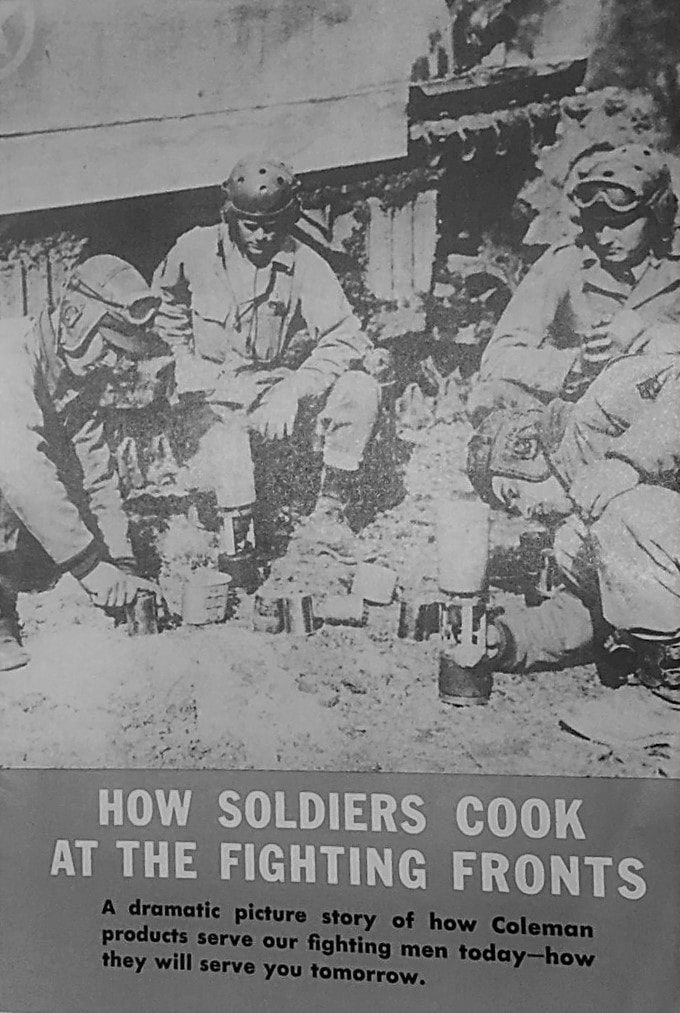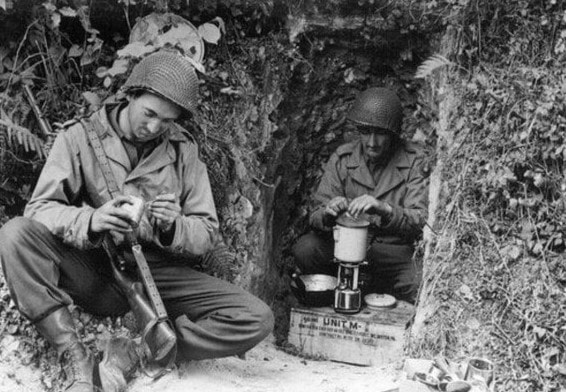|
During World War II, the U.S. government tasked the Coleman outdoor camping equipment company to develop a compact stove for military use. The stove had to be lightweight, no larger than a quart-sized thermos bottle, burn any kind of fuel, and operate in weather from −60 to +125 °Fahrenheit. Within 60 days, Coleman came up with what became the G.I. Pocket Stove. Designated their Model 520 Coleman Military Burner, and referred to by the Army Quartermaster Corps as the M1941 Stove, the stove first saw service in November 1942 when 5,000 of the stoves accompanied U.S. forces during the invasion of North Africa. Over 1 million of the stoves were produced for war use, where it won high praise in the field: journalist Ernie Pyle ranked it "just behind the Jeep” in its usefulness. Six small hinged metal pieces on the top fold outward for use as pot supports, and fold inward for storage. The stove came with a two-piece telescoping aluminum case, which can be used as cooking pots. Source: Wikipedia
During World War II, another common source of heat for preparing food was small olive drab cans of jellied wood alcohol. The nomenclature was Fuel-Tablet, Ration Heating. The small can seen here could adequately heat a ration can or even boil water for coffee. The larger fuel can was meant to prepare rations for 5 people. The cans would be opened by prying under the lid. Then, the wood alcohol would be lit with a match or lighter. After use, the flame was extinguished by carefully sliding the lid over it. With the flame out, the can was resealed, thus saving the balance of the fuel for later use.
0 Comments
|
AuthorWelcome to the CAF MN Wing Blog. You will find information on projects we are working on, upcoming events, and more. Archives
April 2024
Categories
All
|






 RSS Feed
RSS Feed